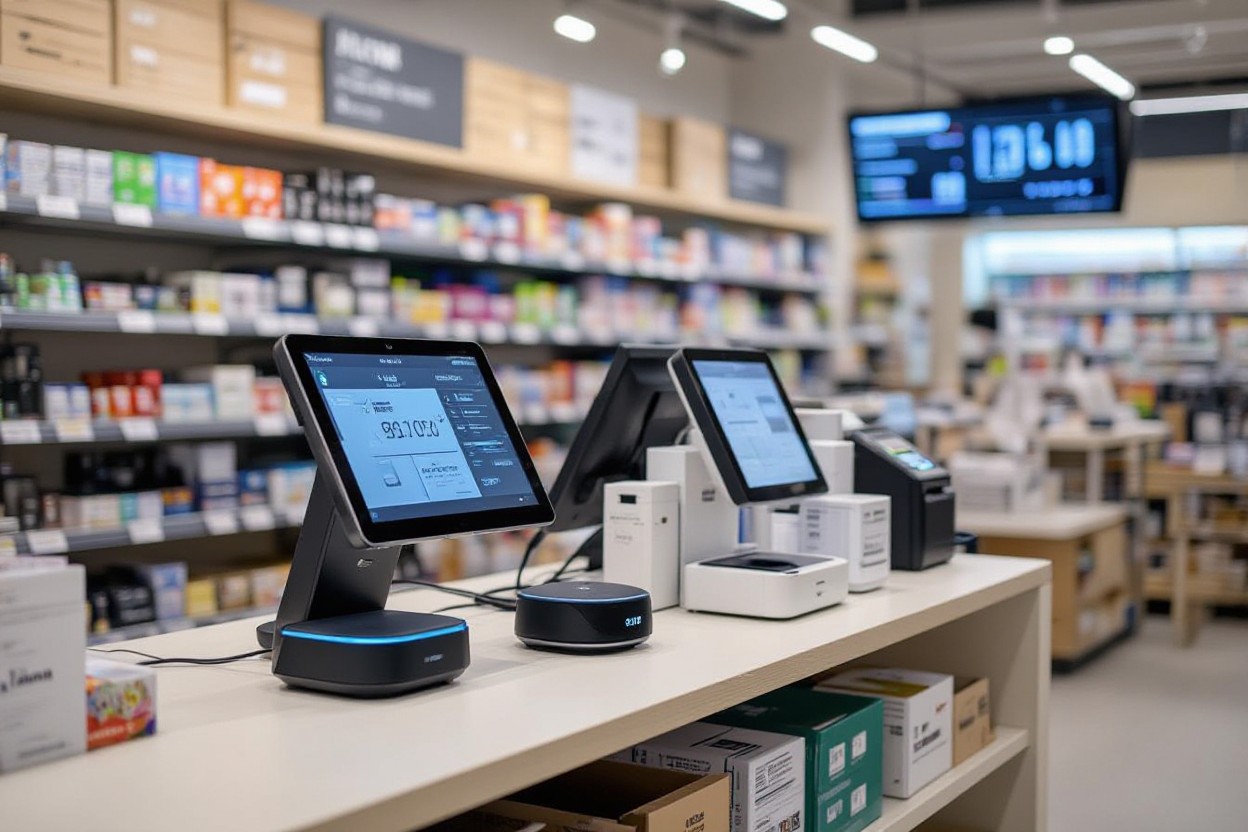Best AI Tools for Small Business Automation: Automate & Use AI

Many small businesses like yours can rapidly improve productivity and cut costs by integrating proven AI tools that automate customer service, marketing, accounting, and operations; this guide helps you evaluate options, implement workflows, and scale safely, with practical recommendations and a curated list like AI Tools Every Small Business Owner Should Know in 2025 to get you started.
Key Takeaways:
- Automate repetitive workflows (chatbots, invoicing, scheduling, email) to save time and scale operations.
- Leverage AI analytics and integrations with CRM/ERP to improve decisions and personalize customer experiences.
- Pick low-code/no-code, easy-to-integrate tools with strong security and clear ROI; roll out in phases to control cost and risk.
Understanding Small Business Automation
What is Automation?
Automation uses software, scripts, APIs and bots to handle repeatable tasks—like invoicing, appointment booking, inventory alerts and chat support—so you spend less time on manual work. For example, automated invoicing workflows can cut processing time by up to 80%, while RPA tools run 24/7 to sync data between systems without human intervention.
Benefits of Automation for Small Businesses
Automation reduces errors, lowers operating costs, and scales capacity so you can serve more customers with the same team. Chatbots can handle roughly 60–70% of routine queries, automated accounting trims reconciliation time, and scheduling tools eliminate double bookings, helping you boost revenue without hiring extra staff.
Practical gains show up fast: automating billing and payment reminders shortens days sales outstanding, CRM-driven email sequences increase repeat purchases, and inventory alerts prevent stockouts. Small businesses often recover the automation investment within months by cutting manual hours, reducing waste, and improving customer response times.
Overview of AI in Business
AI is driving measurable efficiency in small businesses by automating repetitive tasks and improving decision-making; McKinsey estimates AI could add trillions to the global economy by 2030, and many SMBs see payback within 6–12 months on focused automation projects. You can deploy chatbots, predictive analytics, and RPA to cut processing time, reduce errors, and scale customer handling without proportional headcount increases.
What is AI?
AI encompasses machine learning, natural language processing, and computer vision that identify patterns and make predictions from data; you interact with LLMs for content and chat, use supervised models for demand forecasting, and apply OCR combined with ML to extract invoice fields. Many practical systems pair statistical models (like gradient-boosted trees) with rule engines to handle edge cases.
How AI Enhances Automation
AI converts rule-based automation into adaptive workflows that learn over time: classifiers route support tickets, NLP summarizes customer messages, and anomaly detection flags fraudulent transactions. You’ll see accuracy gains—modern OCR plus ML frequently exceeds 90% on structured documents—and faster resolution, letting your team focus on exceptions and growth activities.
For example, a 20-person e-commerce shop integrated an AI demand-forecasting model and automated order routing: inventory turnover improved, stockouts fell, and fulfillment time dropped by roughly 30–40%. You can replicate that pattern by starting with high-volume, low-variance tasks (invoicing, returns handling, lead scoring) and iterating models as data accrues.

Key AI Tools for Small Business Automation
Customer Relationship Management (CRM) Tools
You can use AI-enhanced CRMs like HubSpot, Salesforce Einstein, or Zoho CRM to automate lead scoring, route high-value prospects, and trigger personalized follow-ups. For example, predictive scoring surfaces the top 10–20% of leads so your sales team focuses effort where conversion probability is highest; sentiment analysis and chatbots handle routine inquiries, freeing you to close deals that need human attention.
Marketing Automation Tools
You should deploy tools such as Mailchimp, ActiveCampaign, or Adobe Marketo to automate segmented campaigns, A/B tests, and personalized messaging at scale. AI enables dynamic content swaps, time-optimized sends, and cross-channel orchestration so you can run thousands of tailored touchpoints without manually building each workflow.
Digging deeper, predictive analytics in these platforms forecast customer lifetime value and churn risk, letting you allocate budget to high-ROI cohorts; programmatic ad bidding adjusts bids in real time, and dynamic creative optimization (DCO) serves variant creatives based on user signals—common KPIs to track are open rate, CTR, conversion rate, and cost per acquisition.
Accounting and Financial Management Tools
You can automate bookkeeping, invoicing, and expense workflows with QuickBooks Online, Xero, Expensify, or Bill.com, using OCR and ML to classify receipts, match transactions, and generate invoices. This reduces manual data entry, speeds up reconciliations, and helps you close monthly books faster so you see a clearer cash position sooner.
For more depth, AI-driven cash-flow forecasting models synthesize invoices, payment histories, and seasonal patterns to project shortfalls and surpluses; alerts can notify you when projected balances cross your thresholds, and integrations with payroll and tax tools streamline compliance while improving metrics like DSO and working-capital visibility.
Implementing AI Tools in Your Business
You should pilot small, high-impact workflows first to prove ROI and limit risk; run a 4–8 week test on one use case, measure time saved and error rates, then scale the winner. For practical vendor guidance and implementation examples see Automate Your Startup or SMB With These AI Tips and Tools, which outlines step-by-step automation for sales and support.
Assessing Your Business Needs
Start by mapping workflows where your team spends more than an hour daily or tasks that cost over $500 monthly in labor. Then quantify volume, seasonal peaks, and data sources; for example, an e‑commerce shop with 2,000 monthly orders may prioritize fulfillment and returns automation first. Use simple ROI calculators to rank opportunities.
Choosing the Right Tools
Evaluate APIs, prebuilt integrations, data residency, and pricing model—per-user vs per-call—when selecting tools. Also check uptime SLAs (99.9% is common), security certifications like SOC 2, and whether the vendor supports exportable models or data. Prioritize platforms that reduce custom code and offer role-based access.
Match tool types to problem types: use RPA for rule-based back-office tasks, LLM APIs for content generation and summaries, and specialized CRM automation for lead routing; for example, combine a connector platform (Zapier/Make) with an LLM service and your ERP to automate invoicing and follow-ups without heavy engineering.
Integration and Training
Plan integration around your existing stack: ensure SSO, API compatibility, and a data schema map before deployment. Expect initial configuration and basic training to take 2–6 weeks for a single team; monitor key metrics like throughput, error rate, and user adoption during that window to validate the rollout.
Deliver role-specific training: run 60–90 minute hands-on sessions, publish one-page cheat sheets, and set a two-week shadow period where users pair with power users. Then track adoption weekly, tie performance metrics (e.g., 30% faster ticket resolution) to tool usage, and convene a governance group to handle change requests and scaling decisions.

Measuring the Success of Automation
You should track both speed and value: measure time savings, error reduction, and revenue impact after deployment. Many teams report 30–70% cuts in manual steps and payback in 6–12 months when they pair tooling with process redesign. Use the vendor list at Best AI Tools for Business and IT Teams | Fixify to benchmark tools and set target improvement ranges before launch.
Key Performance Indicators (KPIs)
Focus on objective metrics: cycle time, throughput, error rate, cost per transaction, customer NPS, and automation coverage (percent of process automated). For example, aim to cut error rate from 5% to under 1% and improve throughput by 25–40%. Track weekly and monthly to spot regressions, and tie KPIs to specific SLAs so you can attribute gains directly to automation changes.
Analyzing ROI from Automation
Calculate ROI by comparing total implementation and operating costs to annualized savings: labor hours saved × fully loaded hourly rate, reduced rework, and improved revenue from faster delivery. If automation costs $80,000 and yields $50,000 annual savings, expect a 1.6-year payback; include depreciation and a 12-month cash-flow view to assess net present value.
Also quantify soft benefits and ongoing costs: include training, monitoring, and bot maintenance (typically 10–25% of initial cost annually). Run A/B tests on critical workflows, attribute incremental revenue conservatively, and use a 12-month rolling dashboard so you can refine targets, prove value to stakeholders, and prioritize next automation waves.
Future Trends in AI and Automation for Small Businesses
What to watch
Expect generative AI and AI copilots to automate content, proposals, and code, reducing creation time by 50% in many teams. You should combine RPA with ML (hyperautomation) to handle end-to-end workflows; for example, a midmarket retailer cut invoice processing time by 70% after adding OCR+ML. Edge AI will let you process sensor data locally for faster responses. You must plan for stronger data governance and explainable AI as regulators increase scrutiny, and budget 10–20% of deployment costs for ongoing monitoring and retraining.
Final Words
Taking this into account, you should evaluate AI tools by how well they automate repetitive tasks, integrate with your systems, and protect data; prioritize solutions that provide measurable ROI, clear workflows, and staff training so your team adopts automation confidently and your business scales efficiently.
FAQ
Q: Which AI tools are best for automating common small business tasks?
A: Best tools depend on the task category. For workflows and integrations use Zapier, Make (Integromat) or n8n to connect apps and trigger automated processes. For customer support and chat use ChatGPT, Claude, or Intercom/Ada with an AI layer for fast replies and routing. For marketing and content creation use Copy.ai, Jasper, or Writesonic for copy, and Lumen5 or Pictory for quick video creation. For sales and CRM automation consider HubSpot with AI features, Salesforce Einstein, or Gong for conversation insights. For accounting and invoicing use QuickBooks or Xero with AI-driven categorization and reconciliation. For scheduling and meetings use Calendly plus AI schedulers (x.ai-like tools) and for document processing use OCR/IDP tools such as Abbyy, DocParser, or UiPath Document Understanding. Match tools to your tech stack, integration options, budget, and the specific repetitive tasks you want to remove.
Q: How should a small business evaluate and choose an AI automation tool?
A: Evaluate tools by mapping the problem, checking integrations, total cost of ownership, data security, and usability. Start by listing the exact repetitive task, expected time saved, and measurable outcomes. Verify native integrations or API availability with your current systems (CRM, accounting, email). Assess pricing (subscription, per-action fees), onboarding and maintenance cost, and vendor support. Confirm data handling: where data is stored, encryption, compliance (GDPR, CCPA, industry rules), and options for on-prem or private deployment if needed. Pilot shortlisted tools on a low-risk workflow to measure actual time saved and error rate, gather user feedback, and estimate ROI. Prefer tools with clear versioning, logging, and rollback options to reduce operational risk.
Q: What are practical implementation steps and best practices for adopting AI automation in a small business?
A: Implementation steps: 1) Audit and map current workflows to identify high-impact, low-complexity automation candidates. 2) Clean and standardize your data to improve AI reliability. 3) Start with a pilot: automate one end-to-end process, measure KPIs (time saved, error reduction, customer response time), and iterate. 4) Build integrations and error-handling: add logging, alerts, and fallback manual steps for failures. 5) Train staff on new processes and provide concise runbooks for exceptions. 6) Monitor performance, costs, and model drift; schedule regular reviews and updates. Best practices: keep humans in the loop for decisions that require judgment, enforce access controls and audit trails, use rate limits and test environments before production, track ROI and compliance, and scale automation incrementally by stacking reliable automations rather than trying to automate everything at once.



